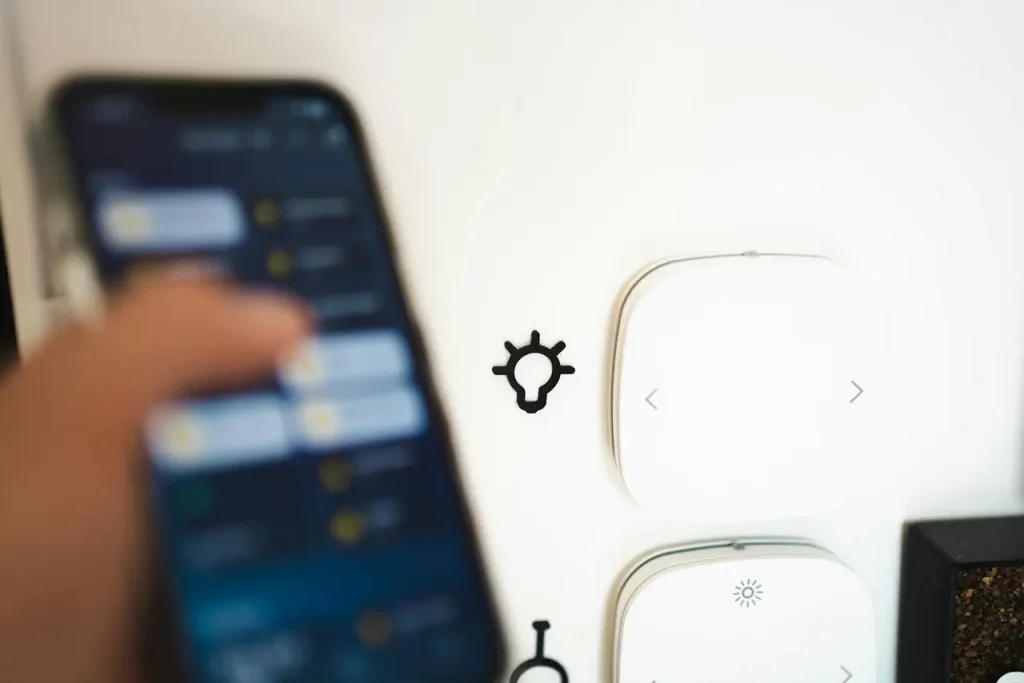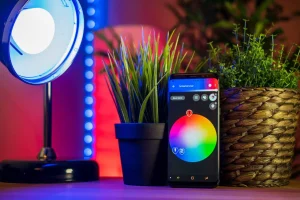
A Simple Guide to Smart Home Devices for Beginners
Let’s be honest. The tech world loves its buzzwords, and for a long time, “smart home” felt like one of the biggest. It conjured images of complicated wiring, astronomical costs, and needing an engineering degree just to turn on a light. If you’ve ever found yourself wondering, ‘where to start with smart home?’, you are absolutely not alone. It can feel incredibly overwhelming. But the reality has changed. Drastically. Creating a connected home is now more accessible and affordable than ever before, and this simple guide to smart home devices is designed to prove it. Forget the jargon and the intimidating schematics; we’re breaking it all down into easy, manageable steps. This is your starting point for making your home work for you, not the other way around.
Embracing the Future: Your Simple Guide to Smart Home Devices
Stepping into the world of home automation can feel like a giant leap. But it’s more like a series of small, confident steps. Each device you add, from a single light bulb to a complete security system, builds upon the last, creating an environment that’s more convenient, efficient, and secure. This journey isn’t about turning your house into a sci-fi movie set overnight. It’s about solving everyday problems with clever technology. This guide is all about that practical application.
Beyond the Hype: Defining Smart Home Technology
So, what exactly is a smart home? At its core, it’s a residence equipped with internet-connected devices that allow for the remote management and monitoring of appliances and systems, such as lighting and heating. These devices can communicate with each other and with you, via a smartphone app or voice assistant. It’s not about having a talking refrigerator that critiques your food choices (not yet, anyway). It’s about automation and control. It’s telling your speaker to turn off all the lights when you’re already cozy in bed. It’s your thermostat knowing when you’ve left the house and adjusting the temperature to save energy. That’s the magic. This concept is central to understanding home automation.
The Core Benefits of a Connected Home
Why even bother? The benefits of smart home automation are tangible and can be grouped into three main categories: convenience, security, and efficiency. Convenience is the most obvious—automating repetitive tasks frees up your time and mental energy. Security is another huge plus, with smart cameras, locks, and sensors providing peace of mind whether you’re at work or on vacation. Then there’s efficiency, particularly with energy. If you’re wondering which smart home devices save most energy, smart thermostats and lighting are champions, learning your habits to cut down on waste. This can lead to very real savings on your utility bills, and you can find more daily money-saving tips without sacrificing comfort by optimizing your home’s energy use.
Starting Your Smart Home Journey: A Beginner’s Checklist
Ready to dive in? Hold on. A little planning goes a long way. Before you start adding items to your online shopping cart, taking a moment to strategize will save you headaches and money down the road. The goal is to build a cohesive system, not a random collection of gadgets that don’t play well together. We advocate for a thoughtful approach.
Assessing Your Needs: What Do You Want Your Smart Home To Do?
This is the most critical question. Don’t start with the tech; start with your life. What are your daily annoyances? Do you always forget to turn off the lights downstairs? Do you worry about package deliveries when you’re not home? Are you looking for the simplest smart home system for seniors to help a relative live more independently? Make a list of problems you want to solve. This personal checklist will guide your purchases and ensure you’re buying devices you’ll actually use. Thinking about ‘what are the best smart home devices for beginners?’ really starts with what you need them to accomplish.
Essential Smart Home Categories for New Users
Most smart home devices fall into a few key categories. For beginners, it’s best to start with one or two of these areas before expanding. Each offers a distinct set of benefits and a great entry point into home automation.
Smart Lighting Solutions
This is often the gateway into the smart home world. It’s relatively inexpensive, easy to install, and the results are immediate and impressive.
Intelligent Climate Control
Smart thermostats and air conditioner controllers offer a fantastic return on investment through energy savings, learning your schedule to optimize heating and cooling.
Advanced Home Security
From video doorbells to indoor/outdoor cameras and smart locks, this category is all about protecting your home and loved ones.
Voice-Activated Assistants
These are the central conductors of your smart home orchestra. Devices like Amazon Echo and Google Nest Hub allow you to control everything with your voice.
Unpacking Popular Smart Home Devices and Their Advantages
Let’s get into the specifics. Understanding what each device does is key. We’ll look at the most popular and impactful gadgets you can get started with today.
Smart Lighting: Set the Mood, Save Energy
Smart bulbs and light strips are amazing. Seriously. You can change not just the brightness but also the color of your lights to match your mood or activity. “Movie night” can trigger warm, dim lighting, while “focus mode” can switch to bright, cool white light. You can set schedules, so your lights turn on automatically as the sun sets, and you can ensure everything is off with a single tap in an app as you leave the house. Brands like Philips Hue and Wyze offer fantastic starter kits.
Smart Thermostats: Intelligent Climate Control
A smart thermostat, like the Google Nest Thermostat, is one of the single best investments for your home. It goes beyond simple scheduling. These devices use sensors and algorithms to learn your daily routines and preferences, automatically adjusting the temperature for comfort when you’re home and for energy savings when you’re away. Many can even be controlled by voice. The ability to pre-heat or cool your house as you head home from work is a luxury you’ll never want to give up. We consider a smart thermostat a must-have.
Smart Security: Protecting Your Home with Technology
Feeling safe is priceless. A smart home security system explained simply is a network of cameras, sensors, and locks that you can monitor from anywhere. Video doorbells from companies like Ring let you see and speak to visitors from your phone. Indoor and outdoor cameras can alert you to motion, and smart locks can be programmed to grant temporary access to guests or lock automatically after a set period. It’s comprehensive, accessible peace of mind.
Smart Speakers and Displays: Your Voice-Activated Assistants
This is where it all comes together. Smart speakers and displays are the heart of a voice-controlled home. By asking, “What smart home devices work with Alexa?” or Google Assistant, you unlock a universe of possibilities. These assistants act as a central point of control. You can ask for a weather update, play music, set timers, and, most importantly, control all your other connected devices. “Hey Google, turn on the living room lights.” Just… wow.
Smart Plugs: Making Any Device Smart
I have to share a story here. My first smart plug was almost my last. I spent a solid hour trying to get it to connect to my Wi-Fi, muttering things I wouldn’t want my mother to hear. I was ready to throw it out the window. But once it finally connected, it was a revelation. My old, “dumb” coffee maker was suddenly a genius, starting my brew automatically at 7 AM. Smart plugs are the unsung heroes, letting you add remote and automated control to almost any corded appliance, from fans to holiday lights, making them a vital part of any starter kit.
Seamless Integration: Setting Up and Connecting Your Smart Devices
Buying the devices is the first step. Making them work together is where the magic happens. A pile of smart gadgets that don’t communicate is just clutter. The goal is a seamless, integrated system. Don’t worry, this guide will clarify the process of ‘how to set up smart home devices’.
Understanding Smart Home Hubs and Gateways
So, how do smart home hubs work? A hub, or gateway, acts as a central translator for your devices. Some devices use Wi-Fi, but others use different wireless languages like Zigbee or Z-Wave. A hub, like one from Samsung SmartThings or Aqara, speaks all these languages, allowing a motion sensor to trigger a Wi-Fi-connected light bulb. So, why use a smart home hub? It creates a more robust and reliable network, especially as you add more devices.
Voice Assistants: The Command Center of Your Home
As we mentioned, assistants like Alexa, Google Assistant, and Apple’s Siri are often the primary way you’ll interact with your smart home. Most modern smart devices are designed to work with one or all of them. When you buy a new device, the packaging will almost always display logos indicating compatibility. Linking a new device is usually a simple process within the assistant’s app, and once it’s done, you can add it to your voice-controlled arsenal. The central role of these assistants can’t be overstated.
Automating Your Home: Routines and Scenes
This is where you graduate from remote control to true automation. Routines (or Scenes) are custom commands that trigger multiple devices to act at once. For example, a “Good Morning” routine could simultaneously turn on your bedroom lights, start the coffee maker via its smart plug, and play your favorite morning news podcast on a smart speaker. A “Goodbye” routine could turn off all lights, adjust the thermostat, and arm your security system. This is the ultimate goal, and it’s easier to achieve than you might think.
Maximizing Your Smart Home Experience: Tips and Future Trends
Your smart home is set up. Now what? Living with the technology involves a few best practices and an awareness of what’s coming next.
Ensuring Security and Privacy in Your Smart Home
This is a big one. Can smart home devices be hacked? Technically, any internet-connected device can be a target. But you can dramatically minimize the risk. The question of how to secure smart home network is vital. Always change the default username and password on new devices. Use a strong, unique password for your Wi-Fi network. Enable two-factor authentication on your accounts whenever possible. Reputable brands also issue security updates to patch vulnerabilities, so keep your device firmware updated. Safety should always be a priority.
Common Challenges and Simple Troubleshooting Tips
It’s not always a flawless experience. Your Wi-Fi network is the backbone; if it’s weak or unreliable, your devices will struggle. Sometimes, devices will mysteriously go offline and need to be power-cycled (the classic “unplug it and plug it back in”). Compatibility can also be a nightmare, which is why checking a smart home device compatibility guide before you buy is a lifesaver. Nothing is more frustrating than two gadgets that simply refuse to talk to each other.
The Evolving Landscape of Smart Home Technology
The good news is that everything is getting easier. New standards like Matter are designed to ensure that devices from different manufacturers can work together seamlessly right out of the box. This will remove much of the guesswork and reliance on hubs in the future. The technology is constantly becoming more intuitive, powerful, and integrated. This guide is just the beginning of your journey.
Transforming Your Living Space: The Smart Home Advantage
So, after all this, are smart home devices worth it? In our opinion, absolutely. It’s a journey that starts small—a single plug, a few bulbs—and grows with your comfort and needs. It’s about tailoring your living space to your life, adding small moments of magic, and removing tiny points of friction from your day. It’s about security, savings, and a little bit of futuristic fun. We hope this guide has demystified the process and empowered you to take that first exciting step toward a smarter, more connected home. Your future self will thank you.







